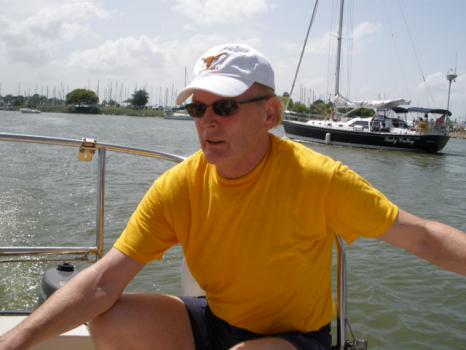Dr. Thomas V Taylor is not just a skilled surgeon. He is a gifted musician, painter, and he loves sailing.
If you take sailing lessons at a local sailing club, you will most likely sail in a general-purpose dinghy. There is a tremendous difference between a regular small boat and a high-performance boat. High-performance boats accelerate faster and are more maneuverable, but, at the same time, they are more sensitive to wind strength and other weather conditions. They also require a faster, quicker response from the crew compared to general-purpose boats. They are much more difficult to sail and will place more demands on your sailing abilities. At the same time, you can learn all the intricate details of boat handling much faster when you operate a high-performance boat.

The development of current small boats mostly occurred in the 1930s. It had remained largely unchanged until the 1990s when the revolution in modern materials occurred and changed the market of small boats. Today, dinghies are capable of much higher speeds than their predecessors. They are also much more durable and easy to maintain.
High-performance dinghies today can compete with windsurfers and catamarans. The small keelboat market has also experiences experienced a lot of changes. If you prefer to sail fast in a boat with a keel, you can get not only a high-performance dinghy but also a small keelboat.
The largest difference between a general-purpose and a high-performance boat is the effect of the apparent wind on the boat speed. When a high-performance boat is sailing upwind, its speed increases with the speed of the apparent wind, says Dr. Thomas V Taylor.
